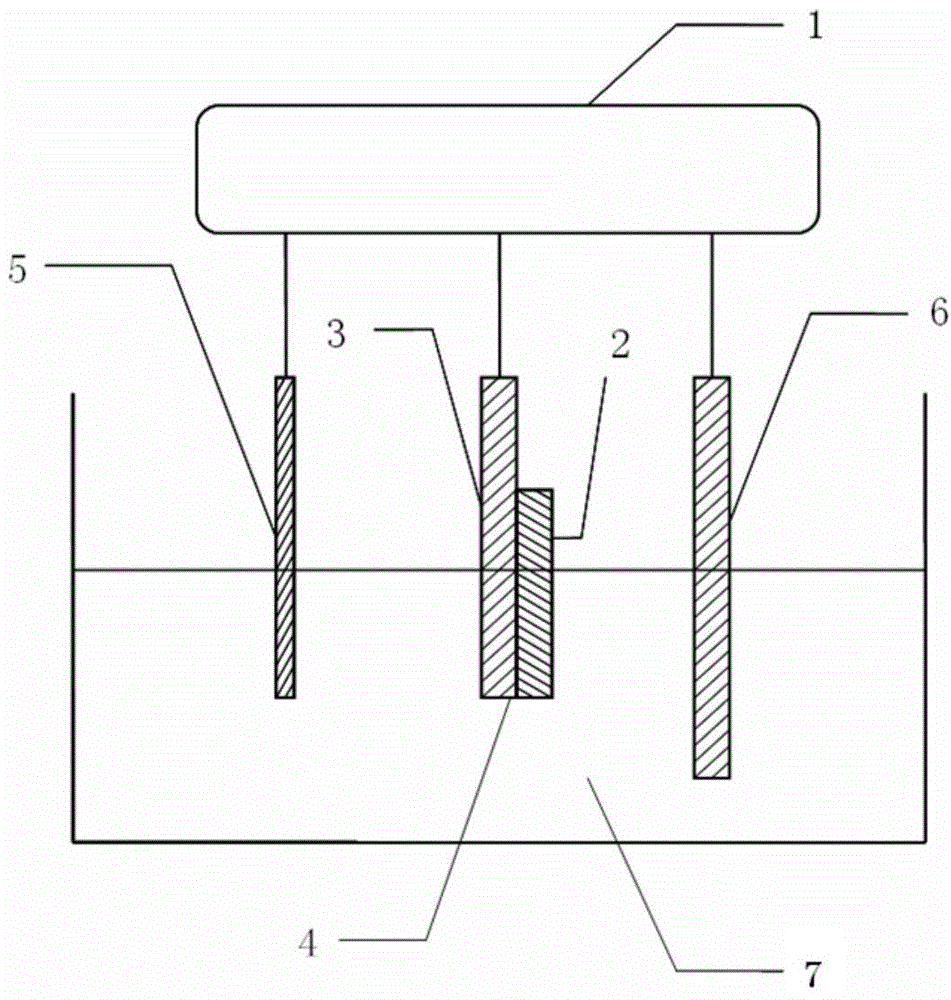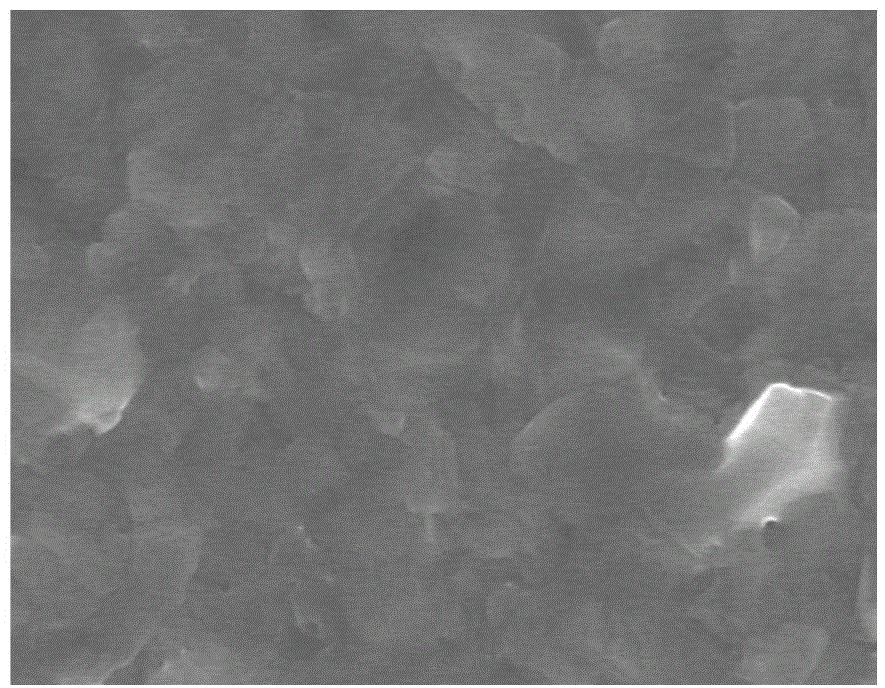Electrochemical treatment method for surface etching of absorption layer of copper zinc tin sulfide thin film solar cell
A thin-film solar cell, copper-zinc-tin-sulfur technology, applied in the field of solar cells, can solve the problems of serious environmental pollution and high cost, and achieve the effects of overcoming unenvironmental protection, reducing recombination rate, and improving roughness
- Summary
- Abstract
- Description
- Claims
- Application Information
AI Technical Summary
Problems solved by technology
Method used
Image
Examples
Embodiment 1
[0043] Embodiment 1 This embodiment is an electrochemical method to etch the surface of the copper-zinc-tin-sulfur film
[0044] Metal Mo with a thickness of 1 μm is deposited on the soda-lime glass, and a copper-zinc-tin-sulfur thin film 2 with a thickness of 1-2 μm is deposited on the Mo layer 4 by electrochemical deposition, and then annealed in a quartz tube furnace. The scanning electron microscope picture of the CuZnSnS thin film 2 after selenization is shown in figure 2 .
[0045] Step (1): connect the selenized copper-zinc-tin-sulfur thin film 2 to the working electrode of the electrochemical workstation 1, the connecting part is only the Mo layer 4, soak it in absolute ethanol solution for 1 to 2 minutes, remove the surface stained with particulate impurities;
[0046] Step (2): preparation treatment solution 7, treatment solution 7 is the mixed solution of potassium sulfite, potassium sulfide and deionized water, the concentration of potassium sulfite in the mixed...
Embodiment 2
[0049] Embodiment 2 This embodiment is an electrochemical method to etch the surface of the copper-zinc-tin-sulfur film
[0050] Metal Mo with a thickness of 1 μm is deposited on soda-lime glass, and a copper-zinc-tin-sulfur thin film 2 with a thickness of 1-2 μm is deposited on the Mo layer 4 by pulse electrochemical deposition, and then annealed in a quartz tube furnace.
[0051] Step (1): connect the selenized copper-zinc-tin-sulfur thin film 2 to the working electrode of the electrochemical workstation 1, the connecting part is only the Mo layer 4, soak it in absolute ethanol solution for 1 to 2 minutes, remove the surface stained with particulate impurities;
[0052] Step (2): Prepare treatment solution 7, treatment solution 7 is a mixed solution of sodium sulfite, sodium sulfide and deionized water, the concentration of sodium sulfite in the mixed solution is 0.25M / L, and the concentration of sodium sulfide in the mixed solution is 0.35M / L, pH=13;
[0053] Step (3): P...
Embodiment 3
[0055] Embodiment 3 This embodiment is an electrochemical method to etch the surface of the copper-zinc-tin-sulfur film
[0056] Metal Mo with a thickness of 1 μm is deposited on soda-lime glass, and a copper-zinc-tin-sulfur thin film 2 with a thickness of 1-2 μm is deposited on the Mo layer 4 by pulse electrochemical deposition, and then annealed in a quartz tube furnace.
[0057] Step (1): connect the selenized copper-zinc-tin-sulfur thin film 2 to the working electrode of the electrochemical workstation 1, the connecting part is only the Mo layer 4, soak it in absolute ethanol solution for 1 to 2 minutes, remove the surface stained with particulate impurities;
[0058] Step (2): preparation treatment solution 7, treatment solution 7 is the mixed solution of potassium sulfite, sodium sulfide and deionized water, the concentration of potassium sulfite in the mixed solution is 0.25M / L, the concentration of sodium sulfide in the mixed solution The concentration is 0.35M / L, pH=...
PUM
 Login to View More
Login to View More Abstract
Description
Claims
Application Information
 Login to View More
Login to View More - R&D
- Intellectual Property
- Life Sciences
- Materials
- Tech Scout
- Unparalleled Data Quality
- Higher Quality Content
- 60% Fewer Hallucinations
Browse by: Latest US Patents, China's latest patents, Technical Efficacy Thesaurus, Application Domain, Technology Topic, Popular Technical Reports.
© 2025 PatSnap. All rights reserved.Legal|Privacy policy|Modern Slavery Act Transparency Statement|Sitemap|About US| Contact US: help@patsnap.com



